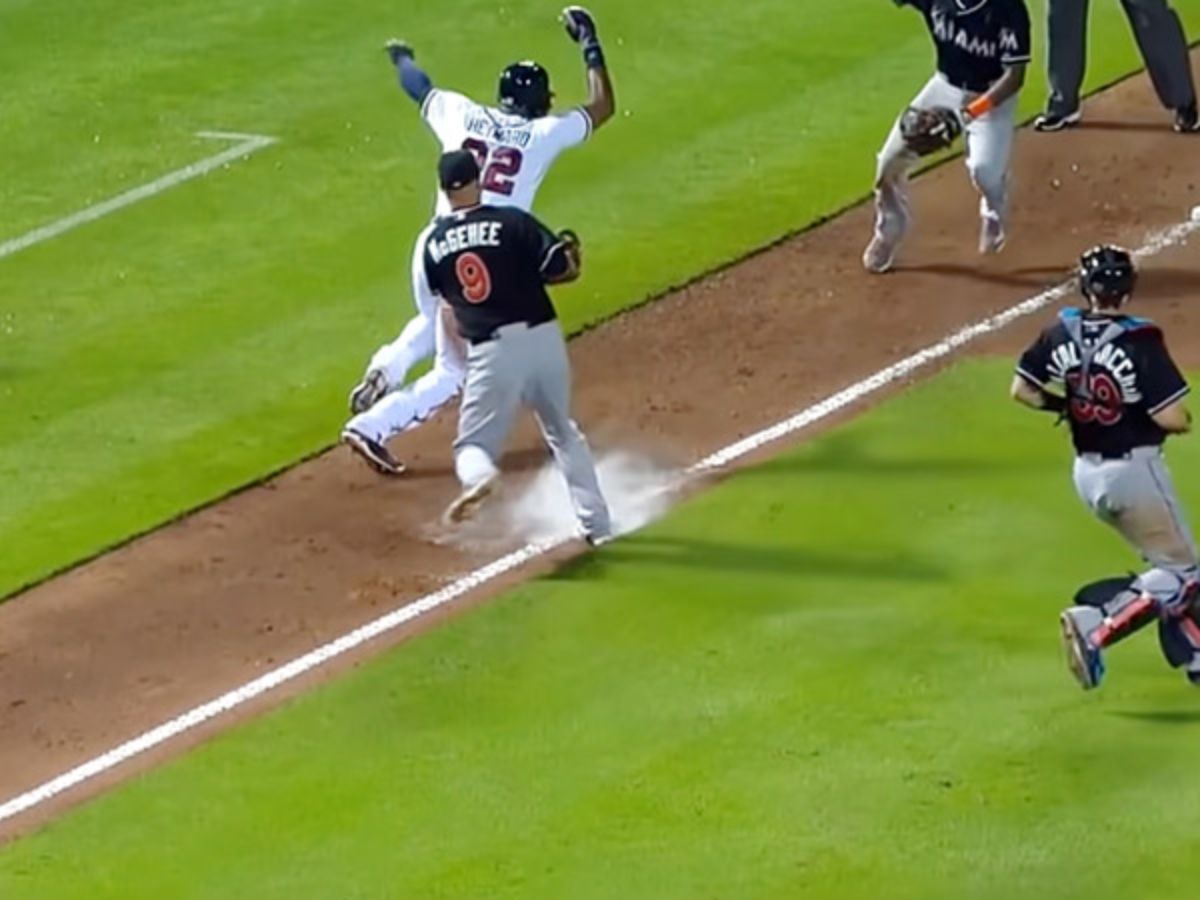
There are three outs in an inning in baseball. In a typical game of baseball, each inning consists of three outs.
This means that the pitching team must get three opposing players out in order to end their turn and allow the other team to bat. Once all three outs have been recorded, the teams switch roles and the opposing team gets their chance to come up to bat.

Each team has the opportunity to bat and field for a total of nine innings, unless extra innings are required to determine the winner. Each out is a crucial moment in the game, as it brings the defending team one step closer to ending their opponent’s turn and gaining control of the game. Understanding the concept of outs is essential for any baseball player or avid fan of the sport.
Contents Inside
Understanding the concept of innings in a baseball game is crucial. An inning is a division of a game during which both teams have the opportunity to bat and field. Its purpose is to ensure equal chances for both teams to play offense and defense.
In an inning, one team takes its turn at bat and tries to score runs, while the other team tries to prevent them from doing so. Innings play a vital role in determining the outcome of a game, as the team with the most runs at the end of the required number of innings wins.
The number of outs in an inning determines how long a team’s turn will last, as each out marks the end of an offensive player’s opportunity to bat. It’s essential to understand the concept of innings in order to fully comprehend the course and strategies of a baseball game.
An out is a crucial element of baseball, serving to record the progress of the game. It is defined as a situation when a batter is eliminated. This occurrence signifies the end of the plate appearance, with multiple ways to achieve an out.
For instance, a batter could strike out, resulting from three failed attempts to make contact with the pitch. Fielding plays, such as catching a fly ball without it touching the ground or tagging a runner with the ball before they reach a base, can also contribute to an out.
Each game consists of nine innings, with three outs per team per inning. Understanding the significance of outs allows players and fans alike to keep track of the game’s progress and anticipate the potential outcome.
An inning in baseball follows the standard rules, with a typical inning consisting of three outs. The number of outs is crucial in determining the progression of the game. Each out made by the defending team brings them closer to ending their opponent’s turn to bat.
Likewise, the offensive team strives to avoid accumulating three outs to extend their opportunity to score runs. It’s important for both teams to strategize and capitalize on each out, whether through effective pitching, solid defense, or timely hits. The outs serve as a measure of progress and create momentum swings throughout the game.
Understanding the number of outs in an inning is essential for players, coaches, and spectators alike, as it directly impacts the outcome of the match.
Factors influencing the number of outs in an inning can be attributed to various strategies employed by the batting team as well as defensive plays made by the fielding team. The batting team strategically aims to hit the ball in areas where fielders may not easily be able to make a play.
They might also try to take advantage of the fielding team’s weaknesses or player positioning. Additionally, the batting team may choose to be more aggressive or conservative in their approach, depending on the game situation. On the other hand, the fielding team seeks to make quick and accurate plays to dismiss the batting team’s players.
They employ tactics such as positioning their fielders strategically based on the batting team’s tendencies or even employing specific defensive shifts. Overall, the number of outs in an inning is influenced by the strategies and plays executed by both the batting and fielding teams.

In an inning, the number of outs can be influenced by unusual circumstances. Special scenarios arise that can either add or reduce the total outs. These situations are rare and don’t occur frequently. They cause deviations from the standard three outs per inning.
You might encounter occurrences that result in additional outs being recorded, such as a batter interference, the ball being caught for a double play, or a runner leaving a base too early. Conversely, certain situations can lead to fewer outs, like a game being called off due to weather conditions or an injury forcing a player to leave the field.
It’s important to be aware of these uncommon events that can affect the number of outs in an inning.
Strategies for maximizing or minimizing outs focus on offensive techniques to avoid outs and extend the inning. These techniques involve smart base running, well-placed bunts, and selective swinging to make solid contact with the ball. By doing so, the offense can keep the inning alive and potentially score more runs.
On the other hand, defensive tactics are aimed at increasing outs and ending the inning quickly. The defense may employ strategies like aggressive pitching to induce ground balls or fly balls that turn into easy outs. They can also use effective communication and positioning to prevent extra bases and potential scoring opportunities for the opposing team.

Balancing offensive strategies to avoid outs and defensive tactics to secure outs is crucial in the game of baseball. The objective is to maximize offensive production while minimizing defensive vulnerabilities to achieve success on the field.
In a regulation baseball game, there are 3 outs per team in each inning. This means there are a total of 6 outs in a complete inning, with each team getting a turn to bat and a turn to field.
If a team gets more than 3 outs in an inning, it is considered an “extra out” and does not count towards the official score or statistics. The next inning starts as usual with the opposing team getting a chance to bat.
Yes, it is possible to have less than 3 outs in an inning. If a team scores enough runs to end the game before recording 3 outs, the inning is considered to be complete. This is known as a “mercy rule” and is often used in youth or amateur baseball.
Understanding the concept of outs in an inning is crucial for any baseball enthusiast. It not only determines the progress of the game but also adds excitement and anticipation for players and fans alike. Each inning comprises of three outs for both teams, and these outs are pivotal in changing the dynamics of the game.
Whether it is a quick double play or a hard-fought groundout, the number of outs directly affects a team’s chances of scoring runs and ultimately winning the game. By keeping track of the outs and strategizing accordingly, teams can optimize their performance and make strategic decisions on the field.
So next time you watch a baseball game, pay close attention to the outs because they serve as the building blocks for creating moments of triumph and celebration on the diamond.
Let’s Build
Contact us todayGet daily tips and tricks for making your best home.
2025 The base Ball Insider